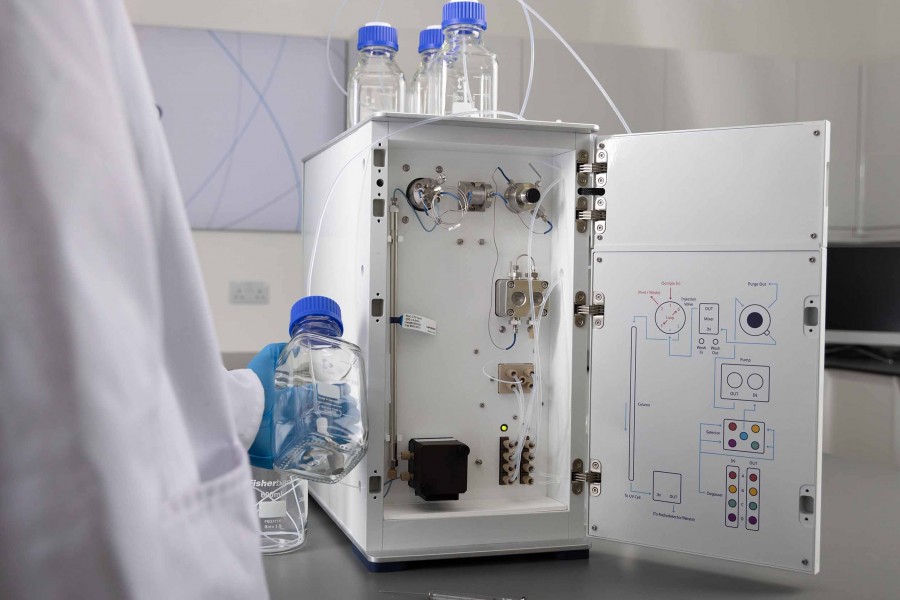Using the Logi-CHROM ONE for quality control in Targeted Alpha Therapies
22/02/2024

The compact radio-HPLC system is being used by University Hospital Carl Gustav Carus to visualise Actinium and its daughters
LabLogic’s Logi-CHROM ONE radio-HPLC system is being used in the quality control (QC) of Targeted Alpha Therapies (TAT) to analyse 225Ac radiopharmaceuticals at the University Hospital Carl Gustav Carus in Dresden, Germany.
Since 2020, the hospital has been using 225Ac-DOTATATE to treat neuroendocrine tumours (NET) and 225Ac-PSMA-I&T for prostate cancer. Dr. Marc Pretze is a radiochemist at the hospital’s Nuclear Medicine department, where he oversees the routine production and QC of radiopharmaceuticals for both theranostics and translational research. Besides 225Ac, the Logi-CHROM is also being used for a range of other medical radioisotopes including 18F, 68Ga, 90Y, 99mTc, 177Lu, 203Pb, and 212Pb.
“We can now visualise even the smallest amounts of activity in a beautiful sharp peak …”
Dr. Pretze said, “We are particularly pleased with the size and operation of the Logi-CHROM ONE. It is one of the most simple and smallest r-HPLC systems I have used. Others have too many superfluous extras that are not necessary for radiopharmaceutical QC. The sensitivity is a significant improvement compared to our previous system. We can now visualise even the smallest amounts of activity in a beautiful sharp peak, such as 10 – 100 kBq 225Ac.”
Preparing the Logi-CHROM ONE for use is intended to be much quicker compared to other r-HPLC systems. Dr. Pretze said, “There’s no waiting for the oven. You just press system start, rinse the loop, and it’s ready. The r-HPLC has integrated very well into our QC routine, and we are pleased with the smooth set-up.”
Greater sensitivity using 4π geometry
The Logi-CHROM ONE’s radiodetection module has different options of radiodetectors available, allowing users to choose the most suitable depending on their application. Dr Pretze is using a well-geometry 4π NaI(TI) scintillation detector, which delivers a clear sharp peak from the low-yield gamma radiation caused by the decay of the alpha-emitting Actinium and its daughters.
The 4π detector allows for more accurate and precise measurements by providing almost complete solid angle coverage of the source by surrounding it to detect the isotopic decays. It includes a set of fixed volume measurement cells and holder to ensure reproducible positioning for each sample. The improved counting efficiency associated with the 4π detector allows users to measure a smaller radioactive sample, meaning personal safety is improved as users can reduce their injection volume or activity concentration.
Find out more
You can learn more about the Logi-CHROM ONE by clicking the button below to speak to a product specialist directly to request a guided demonstration.